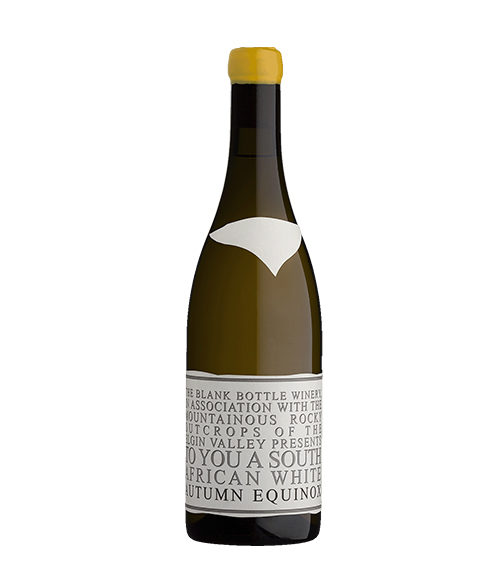Ship Immediately
Showing the single result
Active filters
BLANKbottle Autumn Equinox 2022
"This is a blend of Weisser Riesling, Semillon and Sauvignon blanc from Elgin
DISCLAIMER: I am no activist and I don't belong to any kind of organisation. I pick grapes from everywhere and respect each area for its contribution to a specific wine. In this newsletter however, I’m focusing on what Elgin does well and exploring the possible relevance of the Autumn Equinox theory. The Autumn Equinox theory… The more I learn about farming and wine, the more I wonder how the olden-day farmers decided what to plant where. Nowadays, before planting, farmers make use of professionals who scan the soil and dissect and analyse the different soil layers, physically as well as chemically. They study topographical data and in some cases make use of satellites and even drones. They construct terroir models in order to understand… Viticulturists (like Jaco Engelbrecht who works for me on a consultancy basis) also map the great Grand Cru vineyards of Europe which enables them to compare our new sites to the greats of the world.
All this is done with one goal in mind: figuring out what to plant where! Ultimately, however, they feed from decisions made in ancient times. Times when they got it right without satellites, drones and engineering surveyors. Times when they had time to observe… One such approach that was often used, is the Autumn Equinox theory. In the Northern Hemisphere the autumnal equinox falls on 22/23 September, as the sun crosses the celestial equator on its way south. In the Southern Hemisphere the Autumn equinox occurs on 20/21 March, when the sun moves back north across the equator - otherwise known as the “Harvest moon". Traditionally it marked the end of the harvest season, where they took stock of what was grown and gathered and gave thanks for what they had received. So their theory was very simple: plant whatever crop ripens a few days before, on, or after (basically as close as possible to) the Autumn Equinox. And that got me thinking about Elgin. During February and early March when the heat waves hit the Western Cape, grapes in Elgin are still green, with sugars around 16° Balling.
The vines have plenty of energy to sustain the heat and by the time the heat waves have passed, moderate temperatures take the grapes through a mild, slow ripening phase. This enables the vines to produce fully ripe grapes. And then, on the Autumn Equinox, the grapes usually have a sugar content of 21 - 23° balling, which is when we pick. So today I decided to release a mixed case of ELGIN wines (including a brand new wine in our portfolio) - stuff that ripened on 23 March, 28 March and a blend with a average picking time at the Autumn Equinox" - Winemaker' notes










